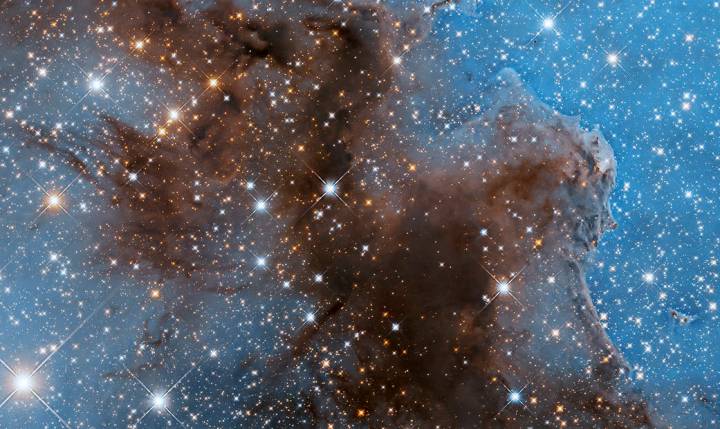The Hubble Space Telescope recently captured a scene made famous by its sibling, the James Webb Space Telescope. One of the first images released from Webb showed the Carina Nebula, a particularly striking structure of dust and gas located in an area of the Milky Way called the Carina-Sagittarius arm. Recently, Hubble has imaged Carina as well, snapping an image of a small section of this famous nebula.
Compared to Webb’s image of Carina, which was taken in the infrared wavelength, Hubble’s image is more pastel. Although Hubble operates primarily in the visible light wavelength and Webb operates in the infrared, in this case, Hubble used its infrared capabilities to peer through the dust of the nebula and see its structure.

“It is an emission nebula, meaning that the intense radiation from its stars ionizes the gas and causes it to glow,” Hubble scientists explain. “That gas is widely and thinly spread out over a large area, earning it the added designation of a diffuse nebula. Carina is a dynamic area of the sky with bursts of star formation occurring alongside star death. As stars form and produce ultraviolet radiation, their stellar winds disperse the gas and dust around them, sometimes forming dark, dusty cloaks and sometimes creating empty patches for the stars to become clearly visible.”
Hubble has visited Carina before, like this image taken in 2007 or another taken in 2010. Each image focuses on a different area of the nebula, bringing together different wavelengths from visible light to infrared and ultraviolet, in order to bring out different features of the scene like dust, gas, and stars.
At 300 light-years across, the nebula is vast, with many different areas showing off scientifically interesting regions like those which are busy with star formation.
Editors' Recommendations
- See incredible time lapses of two of space’s most famous objects
- Hubble discovers over 1,000 new asteroids thanks to photobombing
- This beautiful nebula holds a starry mystery at its heart
- Hubble images the spooky Spider Galaxy
- See what James Webb and Hubble are observing right now with this tool




